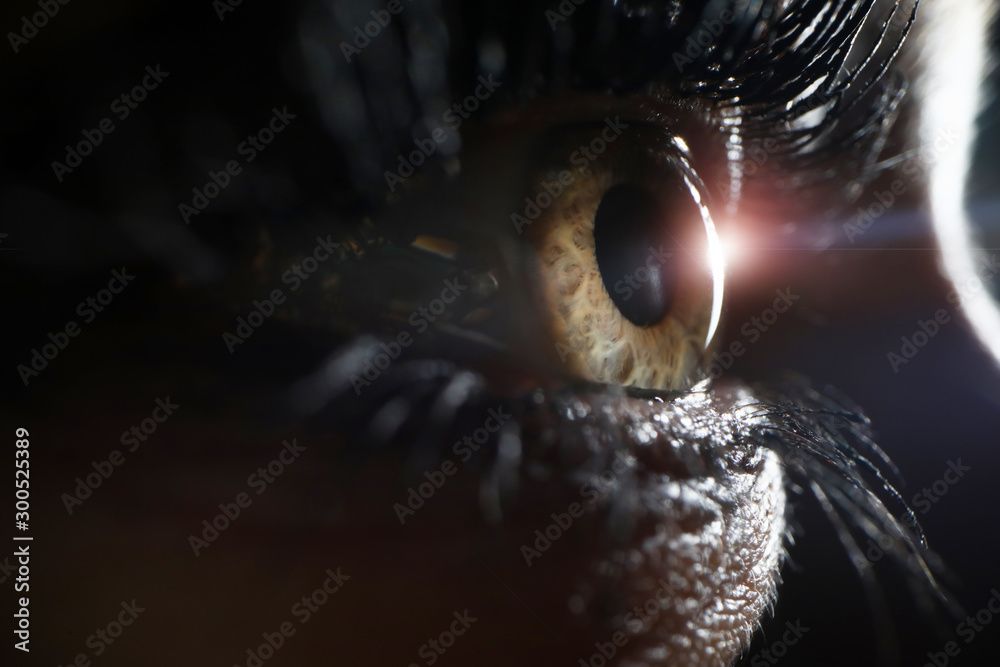Article
Catalyst For A Cure initiative promoting prevention, cure for neurodegeneration
Author(s):
According to the Glaucoma Research Foundation, the collaborative research program will explore some of the common characteristics of glaucoma, Alzheimer’s.

The Glaucoma Research Foundation recently launched the fourth of its flagship Catalyst for a Cure collaborative research initiative.
Dubbed the Melza M. and Frank Theodore Barr Catalyst for a Cure to Prevent and Cure Neurodegeneration, the new endeavor will investigate common characteristics of diseases that occur when key cells in the central nervous system — eye, brain, spinal cord — deteriorate and die, causing a loss of function. Neurodegenerative conditions include glaucoma, Alzheimer’s, Parkinson’s, and amyotrophic lateral sclerosis (ALS).
According to Thomas Brunner, president and CEO of San Francisco-based Glaucoma Research Foundation, eurodegeneration represents a promising but perplexing frontier in human health.
“Currently no therapies exist that can prevent or halt neurodegeneration or regrow healthy neurons,” Brunner said in a news release. “Through this research initiative, we hope to contribute new insights that could lead to innovative treatments and cures for glaucoma as well as other neurodegenerative conditions.
"The new initiative is unique in scope for Glaucoma Research Foundation and for scientific research in general," Brunner said. “Top researchers rarely cross from one disease to another,” he says. “In the Neurodegeneration Initiative, we have a team of experts, each with unique talents and perspectives, who will partner across disciplines and diseases to discover insights into all neurodegenerative illnesses.”
The Neurodegeneration Initiative was launched through a transformative $2.4 million gift to Glaucoma Research Foundation from the Melza M. and Frank Theodore Barr Foundation. Philanthropist and former Glaucoma Research Foundation Board member Frank Theodore (Ted) Barr and his wife Melza have supported the Foundation for 40 years and were significant investors in the inaugural Catalyst for a Cure consortium.
According to Barr, they had been thinking about the challenge of neurodegeneration ever since the first Catalyst for a Cure identified it as a factor in glaucoma.
"In recent years, investigators around the world have been suggesting connections among glaucoma, Alzheimer’s, Parkinson’s, and other neurodegenerative conditions," he said. "We thought it was time to prove it — to understand neurodegeneration in a fundamental way and develop solutions based on that knowledge. And we have great confidence in the Catalyst for a Cure approach."
To carry out the Neurodegeneration Initiative, Glaucoma Research Foundation has selected four talented investigators, from prestigious institutions and diverse disciplines, who will collaborate for an initial period of three years. A team of scientific advisors will coach the group and assess progress. The four consortium members are:
- Sandro Da Mesquita, PhD, an assistant professor, Department of Neuroscience Meningeal Lymphatics and Neurological Disorders Lab, Mayo Clinic, who brings expertise is in the field of brain vascular biology which has implications for Alzheimer’s and other neurodegenerative diseases.
- Milica Margeta, MD, PhD, a physician and surgeon, Massachusetts Eye and Ear, and an assistant professor of Ophthalmology Harvard Medical School, who is a glaucoma clinician and surgeon and a leader in the biology of microglia (unique cells of the brain and spinal cord) and in neuroinflammation.
- Karthik Shekhar, PhD, assistant professor, Department of Chemical and Biomolecular Engineering Faculty Scientist, Lawrence Berkeley Laboratory, member, Helen Wills Neuroscience Institute at University of California Berkeley, who is a leader in computational biology, Dr. Shekhar has played a key role in collaborations that span neuroscience, immunology, single cell genomics, genetics, and machine learning, with a focus on visual systems.
- Humsa Venkatesh, PhD, an assistant professor, Program in Neuroscience at Brigham and Women’s Hospital, Harvard Medical School, whose discoveries have shaped the emerging field of cancer neuroscience, illuminating the nervous system’s role in disease progression.
Team members met for the first time in July 2022 and will start their work together by identifying promising avenues of investigation. Aging, injury, inflammation, genetics — these factors and more may play a role in neurodegeneration and could indicate potential targets for unprecedented treatments and cures.
“The Neurodegeneration Initiative is one of the most exciting projects I’ve been involved with,” Adriana Di Polo, PhD, a professor of Neuroscience at the University of Montreal, who is an award-winning neuroscientist, glaucoma pioneer, and Chairs the Scientific Advisory Board for the new consortium, said in a news release. “It’s a groundbreaking step forward — not just tackling glaucoma but seeking cures for all neurodegenerative diseases.”
With the launch of the Neurodegeneration Initiative, Glaucoma Research Foundation is funding two simultaneous Catalyst for a Cure consortia, each with the potential to change the lives of people with glaucoma. Ongoing since 2019, the Steven and Michele Kirsch Catalyst for a Cure Vision Restoration Initiative has made enormous strides that could soon result in the ability to protect, preserve, and even regenerate retinal ganglion cells — key elements of the optic nerve that degenerate and die over time with glaucoma, causing blindness.
Glaucoma is the world’s leading cause of irreversible blindness. Currently there is no cure, and everyone is at risk for developing this blinding disease. It is estimated that by 2040, 111 million people worldwide will have glaucoma.
A neurodegenerative condition like glaucoma, Alzheimer’s is a progressive, terminal brain disorder, responsible for up to 70 percent of cases of dementia. Treatment options are extremely limited and there is no cure.
Newsletter
Don’t miss out—get Ophthalmology Times updates on the latest clinical advancements and expert interviews, straight to your inbox.




